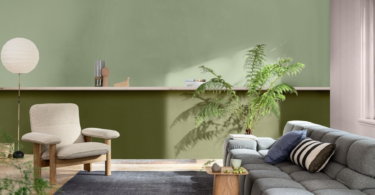Growing your own food is easier than you think and the rewards are plentiful! Here’s some advice to get you started…
Choosing a spot
A kitchen garden doesn’t have to be right outside your kitchen door, but the closer it is the better. It makes it easier to grab that extra tomato or carrot while you’re cooking. Although, if you have to choose between a sunny spot or a close one, pick the sunny one. Most vegetables need at least 6-8 hours of direct sun per day, otherwise they won’t thrive as they should and they’ll be more susceptible to attack from insects or disease.
If you decide to grow in containers, you don’t even need a yard – a deck, patio or balcony may provide just enough space. Raised beds are a good choice for beginners because they make the garden much easier to care for. Also, if you have pets, you may need to fence the garden off.
The three key ingredients
We’ve already covered sunlight. Protection from frost and wind is also important. Plenty of water is next, so the closer your kitchen garden is to a source of water, the easier it will be for you. Regular watering is especially important for seedlings that haven’t developed a deep root system yet (water them lightly every day or two).
Lastly, you need good soil. Most vegetables do best in moist, well-drained soil that’s rich in organic matter, such as compost. Organic matter is important because it provides a continuous source of nitrogen and other nutrients that plants need to grow.
What to grow
Start with what you like to eat. Make a list of favourites and then consider how much produce your family will need so you can plan the size of your kitchen garden. Many gardeners get a little too excited at the beginning and plant more than they need. Keep it simple – opt for ‘fast growers’, such as radishes and salad greens; ‘easy growers’, such as cucumbers and beans, and keep in mind that vegetables such as tomatoes, peppers and squash keep providing throughout the season, while other vegetables, such as carrots and corn, produce only once (so you may need to plant more of them).
No kitchen garden would be complete without flowers. They add beauty and colour to the garden and they also attract beneficial insects or repel the nastier ones.
And then there’s your all-essential culinary herbs – parsley, chives, sage, basil, tarragon, mint, rosemary, thyme… Keep a few favourites in pots on your kitchen windowsill.
The benefits of a kitchen garden
● It’s good for you. Eating more fresh fruits and vegetables is one of the most important things you and your family can do to stay healthy. And you’re more likely to get your ‘five-a-day’ when they’re home-grown.
● There’s less wasting. How much food do you throw away every week? With a kitchen garden, you pick or dig up only what you need.
● You get to enjoy the outdoors. From planting and weeding to watering and harvesting, gardening is a fun way to exercise, to stress less, to get fresh air and enjoy the sunshine.
● It’s gratifying. Watching something you’ve planted and nurtured become food on your plate is extremely rewarding.
● It’s cost-cutting. Your monthly grocery bill will shrink as you begin to stock up on fresh produce from your own backyard. Plus, you can preserve a lot of what you don’t use for later.
How does your garden grow? Advice from kitchen gardeners…
The best thing to have is a kitchen composter. Bokashi works well. You recycle your organic waste and in turn create your own healthy compost. – Christel
You don’t need a big herb garden. Small pots or planters grow more than the average family can use. I use Stack-a-Pots; fantastic product. – Laura
Marigolds and other herbs like yarrow and wilde als help keep bugs away from your veggies. – Nardia
Pay close attention to how your plants grow and jot your ‘hits’ and ‘misses’ in a garden notebook or journal. It’s the only way to learn. – Denise
The easiest veggies to grow for me are tomatoes (especially cherry), green peppers, lettuce, gems, butternut (these last two need a biggish space though) and spring onions. Potatoes make for awesome full and bushy hanging pot-plants. – Zilla
Nothing gives you a fuzzier feeling than going outside with a pair of cutters and a basket and picking veggies for supper. Or when you pick your first three pumpkins and store them under the kitchen table and keep tapping them to see if they’re ready yet. And nothing breaks your heart more than going to pick some spinach for supper, only to find that some tiny hairy creature got there first. Green fingers are only part of it; a stiff upper lip is often the key! – Louise
Food from the soil in your own garden tastes, smells and feels so much better! – Priya
Have you got a kitchen garden? Share your tips with us…











Leave a Comment